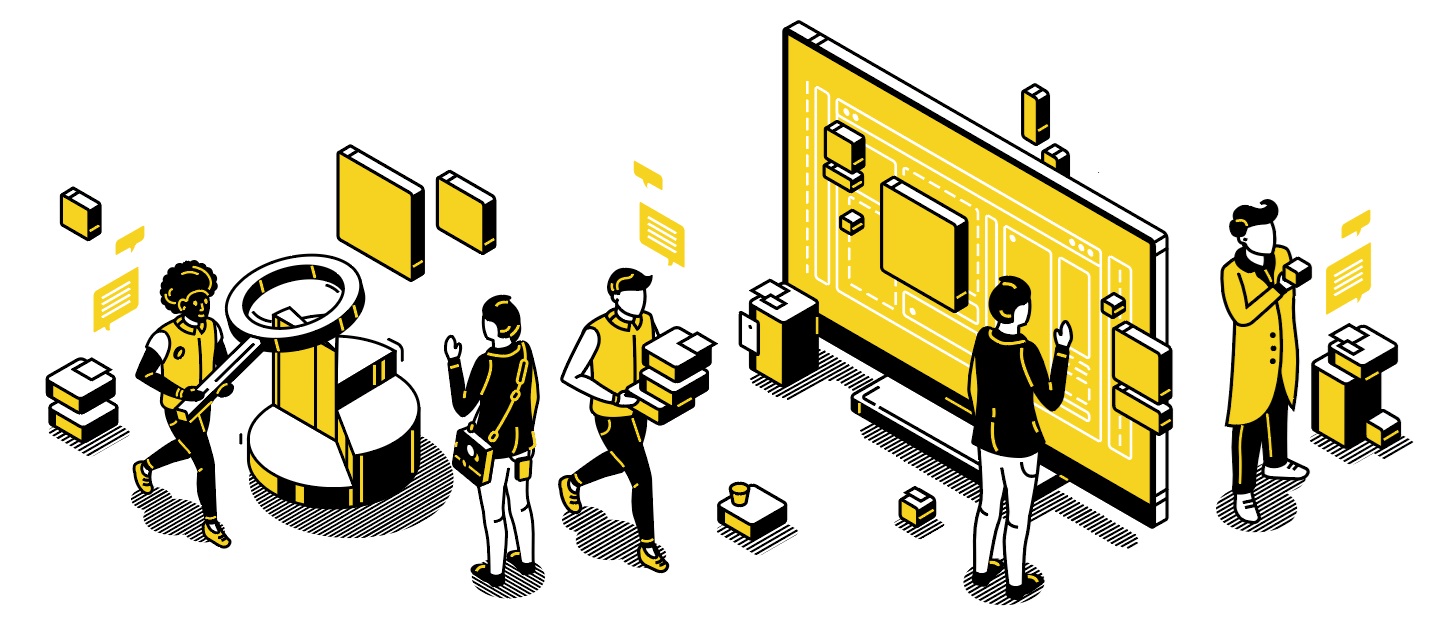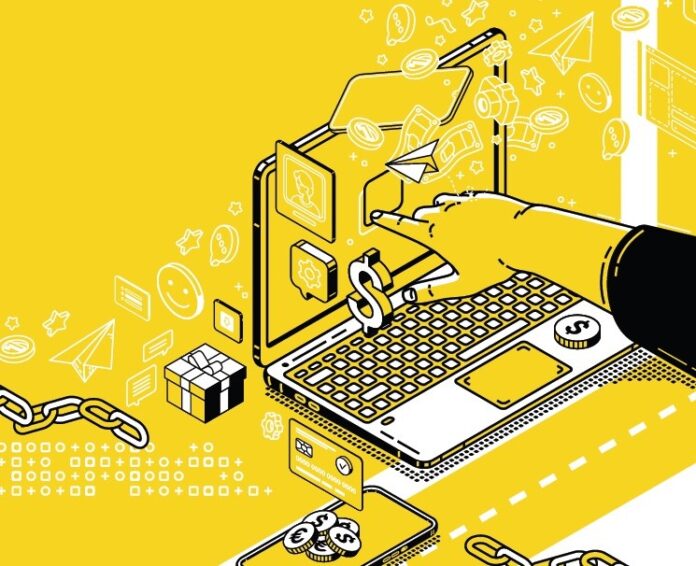By Frank Cespedes and Ben Plomion
For years, digital ad spend was a steadily growing portion of marketing budgets, reaching over $601 billion globally in 2023 1 . But online advertising faces challenges that mean a transformative shift in digital marketing. Meanwhile, the so-called “Web3” has emerged as a medium that can change ad spend and how personal information is used and owned online, with implications for how companies, brands, and customers interact.
This article discusses why the online ad model has grown and its challenges, how companies are fusing Web3 with advertising, lessons for user engagement, and why this matters.
A History of Online Advertising
Since the internet’s emergence as a commercial medium in the 1990s, advertising has been its propelling force. Internet ads disrupted the business models of newspapers and magazines which relied on classified and print ads, while allowing Facebook, Google, Twitter, and others to offer their search and social networking services without charge to consumers.
“If it’s free, then you’re the product.”
At the heart of this revolution was and is the ability of centralized platforms to track people from site to site via code planted in web browsers – “cookies” – and use personal data to target prospects with relevant marketing. Hence the aphorism, “If it’s free, then you’re the product.”
That system is besieged by evolving privacy practices and regulations, growing costs, and diminishing returns for advertisers, and users’ disengagement from those marketing tools.
Privacy

The collection and trading of user data has generated regulatory and company changes. Google, Meta, and Amazon have accounted for about 60 per cent or more of US digital ad revenue for some years, with Google alone responsible for over 27 per cent in 2023 2 . Google has started to phase out third-party cookies from its Chrome browser and, as one observer noted, this privacy-first decision “marks not just the end of an era, but the beginning of a new, perplexing chapter in advertising.” 3
Meanwhile, Meta announced that it was retiring “detailed targeting options” due to privacy concerns and will move toward “broad targeting” which, as Meta itself explained, “essentially means that you’re relying on our delivery system to find the desired audience to show your ad to.” 4 Similarly, Google introduced an approach called Federated Learning of Cohorts (FLOC), which places people into groups based on their inferred interests. This may increase personal privacy, but brands lose transparency into whom they’re targeting and where their ads are running.
Moves like this respond to genuine user concerns. For example, Apple introduced a pop-up window for iPhones in April 2023 that asks people for permission to be tracked by different apps. Within three months, more than 80 per cent of iPhone users worldwide opted out of tracking, according to ad tech firms. 5 But a core value proposition of digital ad media, and a key driver of its adoption in marketing campaigns for the past 25 years, has been the ability to track users and increase return on ad spend (ROAS) versus less-targeted media like TV , radio, or print.
Costs
Even before this loss of targeting abilities, advertisers saw diminishing returns from digital marketing. With the pandemic, these channels became cluttered and expensive. Average cost per lead via Google Ads, for example, increased 20 per cent in 2021 and another 19 per cent in 2022, and even more in sectors like entertainment, travel, and household goods, while click-through rates declined.6
Further, a study analysing digital advertising in 45 countries found that more than one-fifth (22 per cent) of online ad spend in 2023 was lost to ad fraud – deceptive click, impression, and conversion practices and data. As the study noted, “Data provided by popular ad platforms … provide an incomplete picture of the success of advertising campaigns … failing to distinguish between how many clicks or views originated from legitimate users compared to click farms or fraudulent bots.”7

Hence, even as these platforms increase user privacy, advertisers need more transparency in order to achieve ROI, identify and minimise ad fraud, and get what they have paid for. These are inherently conflicting goals in traditional online ad models.
User Engagement
Researchers have long documented the reality of “ad fatigue”, when a company’s ads become so frequent that consumers become bored or annoyed. Ad fatigue can apply in any medium. But online ads are also susceptible to “banner blindness”, which has a similar result but a different dynamic peculiar to that medium. Banner blindness is when internet users stop noticing or even “seeing” ads on a web page.
With online advertising, brands are paying more but getting less, and have fewer ways to track effectiveness.
The psychology of selective attentiveness helps to explain the phenomenon.8 Over time, users can subconsciously identify and skip ads when they notice a block of text embedded in an image or a different font, colour, or format on the web page. Many people have accidentally clicked on an ad, losing their place and incurring time and hassle costs. Once burned, twice shy; when this happens, people tend to become more ad-averse in their browsing behaviour, whether or not they use ad blockers, which, according to Insider Intelligence, almost 40 per cent of internet users worldwide now do.9 Moreover, banner blindness tends to be more common among younger generations, who have spent more of their lives online10 and, ironically, are often the desired targets for online marketers.
With online advertising, then, brands are paying more but getting less, and have fewer ways to track effectiveness; and advertising even more via the medium in order to increase awareness can often reduce user attention and engagement. It’s reminiscent of Einstein’s alleged definition of insanity: “Doing the same thing over and over while expecting a different result!”
How Web 3 Changes Things

Web1 refers to the internet’s foundational stage, defined by information retrieval primarily through static web pages accessed by browsers. Web2 is the current era of social media and digital marketing built on that retrieval system. Web3 refers to technologies where people and brands can interact, shop in a virtual medium, and change how personal data is used, owned, and monetised.
Amara’s Law (attributed to the late Roy Amara of Stanford) states that we tend to overestimate the effect of a technology in the short run and underestimate its effect in the long run. This applies well to Web3, which was initially hailed and hyped as the “metaverse”, attracted much attention (and, often, confusion with cryptocurrency and non-fungible tokens like Angry Apes), and then subsided into semi-gimmicky status in most business discourse. But in areas where the traditional online ad model is faltering, Web3 is transforming how companies, brands, and customers interact.
Respecting User Privacy

Current digital marketing relies largely on centralised platforms that collect vast amounts of personal data to target ads. Web3 advertising, built on blockchain technology, is a more decentralised approach that offers end users greater control over their data. Users can choose whether they want to share transactional or browsing information in exchange for tailored ads and possibly rewards of various kinds (and how much of that information they’re prepared to share), create a specific address or identity just for that brand, or not share any data (similar to the “hide my email” option from Apple). For example, imagine putting up a digital sign that you’re in the market for a given type of product, receiving tailored offers during your buying journey, and then taking down the sign when you’ve purchased. In the Web2 system of cookies, the user is the product; in Web3, the user is the customer and gatekeeper of personal information.
Conversely, information in a blockchain wallet is public, anonymised, and includes transactional and community data, so marketers can identify and deliver ads and promotions to, for example, car enthusiasts. In this approach, advertisers need not choose between respecting the privacy of their customers and targeting them on an individual basis. Hence, a recent study found that 71 per cent of B2C marketers believed that having a wallet address is more valuable than an email address.11
Companies are evolving marketing campaigns in this direction. Nike acquired RTFKT, a digital fashion and collectibles brand that uses Web3 to sell digital sneakers and other goods. This is a form of advertising, while opening up new revenue streams for Nike. Louis Vuitton has launched a Web3 mobile game to enhance its marketing beyond stores. McDonald’s has filed trademarks for a Web3 virtual restaurant that delivers food online and in person. Budweiser is exploring branding and consumer engagement approaches through these technologies.
Simultaneously, a supporting ecosystem is evolving. “Wallet relationship management” firms now offer turnkey services, while Web3 ad networks like Hypelab and Slise facilitate placing ads in decentralised apps and digital wallets, A/B testing, and measuring conversions and ROAS in real time – and generally at lower cost per click than current digital marketing media. PayPal used this method and found that digital wallet consumers are more receptive to its ads, according to Slise.
These initiatives epitomise a broader shift. Marketing here is not based on demographic profiles, but on tailored 1:1 offers without needing to know sensitive user data. It recognises a world where governmental initiatives like the EU’s General Data Protection Regulation enshrine privacy as a human right and where consumers also judge brands based on their data collection practices.
Better Advertiser – User Alignment

Like traditional TV ads, current digital advertising is a one-way street; brands spend money to target users who do or don’t buy their products. Its dynamic tends to consolidate control at the publisher or platform (e.g., Facebook feed, Google or Amazon search, New York Times homepage, etc.). Web3 allows brands and consumers more exchange possibilities and transparency about that spend while respecting user privacy.
Web3 can reduce fraud in digital marketing, which is estimated to be $84 billion globally.12 Recording ad transactions on a blockchain makes it much easier to verify the legitimacy of ad clicks and the authenticity of a human audience versus bots and fake impressions. This capability is driving the creation and adoption of smart contracts for ad transactions, increasing tracking and trust that ads placed via programmatic methods are efficient and tamper-proof. Verasity, an open-ledger system for Web 3 advertising and payments, works with Amazon to provide advertisers with measurement tools and enhanced brand safety features.
In the future, we are also likely to see smart contracts for user consent. For example, a smart Web3 contract (perhaps framed as a promotion or trial subscription) can execute an agreement where users opt to view ads in exchange for a discount, reward, or micropayments, ensuring that targeting is based on explicit consent. This flips the script on current digital marketing methods; users control which types of data are shared and under what conditions, and they, not just the publisher or platform, can monetise that data. Conversely, brands see better ROI via this explicit opt-in process than traditional promotions, motivating a shift in where and how marketing money is spent.
Engagement
With Web3, recipients of ads become more active participants, not passive commodities. That enables new formats such as immersive ads in virtual worlds that offer unique ways to interact with their audience beyond the scope of traditional digital ads. Coca-Cola used Web3 technology to deliver a branded experience in Decentraland, a 3D virtual world where consumers could opt in and win digital collectibles. Although not a direct advertisement, it built brand engagement, creating significant buzz outside that medium – more than 110,000 Twitter impressions and 90,000 views, plus the 63,000 attendees at the event itself.13
With Web3, recipients of ads become more active participants, not passive commodities.
More diverse and creative gamification elements are likely as advertisers confront the limits of current digital marketing methods and the possibilities inherent in Web3. For consumers, these interactive approaches increase brand engagement via psychological ownership. Often called the “IKEA effect”, after the Swedish retailer that sells self-assembled furniture kits, psychological ownership increases when people invest time or effort in the product or brand. Studies indicate that this sense of active agency enhances customer satisfaction, brand loyalty, word-of-mouth referral and, often, willingness to pay.14 Most Web3 initiatives currently use token ownership to achieve this goal. But the ability for consumers to actively opt in, track use, and interact in novel ways opens up many other interactive and brand-community possibilities beyond tokens.
Marketers usually say they welcome customer engagement but, a decade ago, the thought of allowing users to freely post comments about a brand on social media, not highly controlled company media, frightened many marketers. Web3 dramatically increases the level of interaction and transparency and it’s not easy, especially for established brands, to cede more control. But that’s how brands get disrupted and, given the diminishing effectiveness of the current system, survivors will embrace the emerging realities and opportunities.
Why This Matters
The resources devoted to digital marketing make these changes a significant business issue. For context, the money currently spent on online ads is more than the $575 billion in two-way trade between the US and China in 2023. But it’s not just an issue for “Mad Men” and an oligopoly of tech platforms whose revenues are overwhelmingly dependent on ad revenues.
If online social media cannot rely on ad revenues, they will no longer be free. And in a world where so much communication, information, and human exchange depends upon online media, it’s the poor who will be increasingly shut out. Anyone who cares about equal opportunity should also care about the economics of digital marketing.
Privacy online is important, not only as one consumer preference among others, but also as a civic value. There are many examples of cancelling, hecklers’ vetoes, and other mob behaviours online (and offline), as well as increasingly intrusive governmental censoring of online opinions. This tendency is corrosive of free speech and advocacy. Web3’s enhancement of user privacy has wider beneficial impacts on social dialogue.
Finally, improving ad productivity has macroeconomic implications. As the global economy becomes increasingly services-driven, productivity has stagnated. One reason, as economist Dietrich Vollrath emphasises, is that in services “you are almost always purchasing people’s time and attention … the shift into services could account for almost all of the drop in productivity growth.”15 Remember this the next time you hear someone invoke the Davos manifesto about how “the purpose of a company is to engage all of its stakeholders in shared and sustained value creation”. Advertising is not only a core business activity; it’s also a social issue that affects growth and wider patterns of communication and culture.
About the Authors
Frank Cespedes teaches at Harvard Business School and is the author of Aligning Strategy and Sales and Sales Management That Works (Harvard Business Review Press).
 Ben Plomion is Chief Operating Officer of Pearl AI, an AI start-up in the healthcare sector, and a Web3 Lead Educator at Gigantic.
Ben Plomion is Chief Operating Officer of Pearl AI, an AI start-up in the healthcare sector, and a Web3 Lead Educator at Gigantic.
References
-
https://www.emarketer.com/content/digital-ad-spend-worldwide-pass-600-billion-this-year
-
https://www.statista.com/statistics/242549/digital-ad-market-share-of-major-ad-selling-companies-in-the-us-by revenue/
-
Seb Joseph, “Nine questions to consider as Google starts its move away from third-party cookies,” Digiday (4 January 2024).
-
“Walled Gardens Aren’t Incentivized to Make Open Web Advertising Effective”: https://advertisingweek.com/
-
https://nytimes.com/2021/09/16/technology/digital-privacy-.html (updated 23 June 2023).
-
https://www.spiceworks.com/marketing/advertising/articles/decline-in-search-engine-advertising-conversion-rates/
-
Nicola Agius, “$84 billion of ad spend lost due to ad fraud in 2023,” WIX SEO Hub (28 September 2023).
-
Saul Mcleod, “Theories of Selective Attention in Psychology,” SimplyPsychology (11 June 2023): https://www.org/attention-models.html
-
https://www.emarketer.com/insights/ad-blocking/
-
https://www.outbrain.com/glossary/banner-blindness/#
-
State of Wallet Messaging, November 2023: https://www.holder.xyz/state-of-wallet-messaging?
-
https://www.prnewswicom/news-releases/vab-releases-report-offering-in-depth-look-at-the-hidden-costs-of-digi tal-ad-fraud-302025754.html#:~:text=Financial%20Risk%3A%20In%202023%2C%20the,(Source%3A%20Juniper%20Research
-
https://drive.google.com/file/d/1K3mEZlmBb7qvDVpcYqpXf76X47Knj5E3/view?usp=sharing)
-
See Li Jin, “Building Psychological Attachment – Not Just Ownership – Into Web3,” HBR.org (4 April 2023).
-
Dietrich Vollrath, Fully Grown: Why a Stagnant Economy Is a Sign of Success (University of Chicago Press, 2020): 79.











